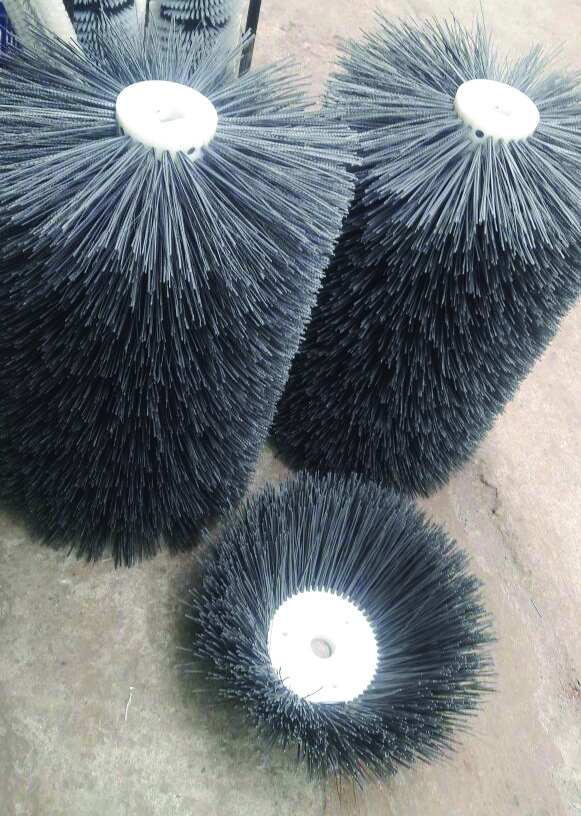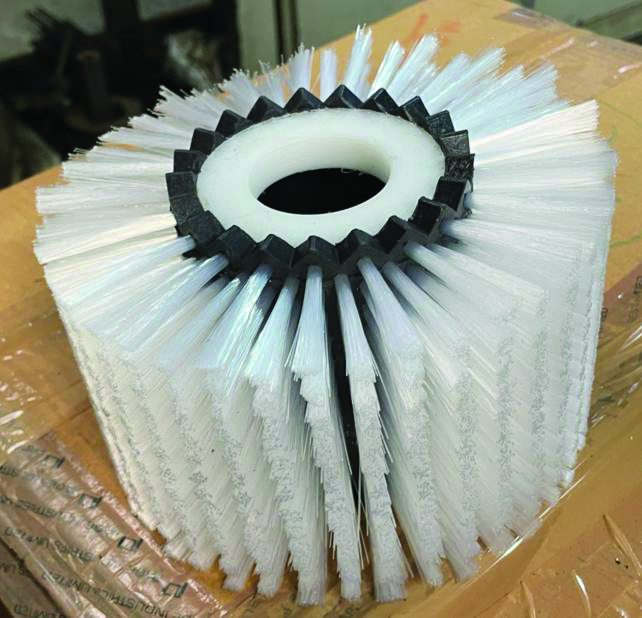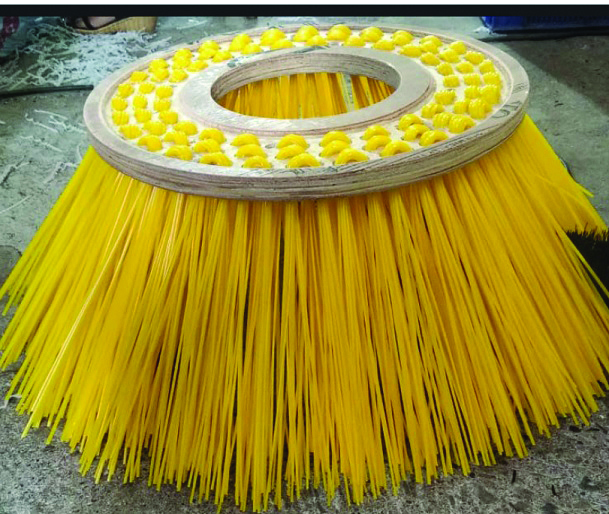

Industrial cleaning requires specialized personnel, methods and equipment to rid the facility of potential hazards like contaminants. Cleaning services are not restricted to industrial plants or manufacturing units but include factories and warehouses, power plants, hospitals, food preparation and pharmaceutical production facilities. One of the specialised tools required for cleaning services is brushes.
Jai Sanghavi, Director, Borghi Brush Machinery Pvt. Ltd, and Aditya Khatod, Partner, Poona Brush Company, suggest parameters to be considered to fit the right brush with the application.

Aditya Khatod, Partner, Poona Brush Company, gives us insights on various aspects of brush components and design.
Brushes are made from different fibres and wires like polypropylene, nylon, abrasive nylon, PBT, PET, PVC, MS, SS, brass, and copper. The properties of the material are matched with the application. Fibre is selected depending on the surface on which the brush is to be used and the finish required. Apart from this, the grade of nylon (06, 66, 612), grit on nylon and diameter of the fibre are also factors that contribute to the choice of brush.
The working environment is also crucial to the choice of fibres. In places which have acids or acidic fumes, only polypropylene fibres can be used as they can withstand chemicals. For applications where water or any solution is continuously used, the properties of the fibre have to be selected accordingly. For temperatures up to 70 degrees C, regular nylon 6 or polypropylene can be used. For temperatures up to 120 degrees C, Nylon 66 or PBT is used. For very high temperature applications, metals fibres have to be used.
In recent years, we have customers requesting us for complete solutions rather than just supplying brushes. We now have our own design and fabrication department where, after understanding the requirement, we design, manufacture and install at site to give a cost effective and profitable solution to the customer.”
Aditya Khatod
Larger the diameter of the fibre or wire, greater the stiffness of the brush. But the with the same fibre diameter, the variation in its trim length can change the final feel of the brush.
A fibre of diameter 1mm will always be stiffer than a fibre of diameter 0.5mm. But if the 1mm fibre is of length 85mm and the 0.5mm fibre is of length 25mm, the brush with the 0.5mm length with be stiffer. Depending on space availability, the height and diameter of the fibre are selected. This will determine the hardness or softness of the brush. The density of the brush also plays a vital role. Depending on the space availability for the application, the height and diameter of the fibre is determined. The denser the brush, the stiffer it gets.
Some applications require a dense brush but some specifically require a brush of less density. The grit level also determines the stiffness of the brush. Lower the grit, tougher or stiffer the brush and vice versa. Based on the application, the grit level is decided.
As for withstanding heat, for temperatures up to 60 or 70 degrees, regular Nylon6 or polypropylene are suitable. For temperatures up to 120 degrees, Nylon66 or PBT can be used and for very high temperature applications, metal bristles can do the job.
In addition, for high rpm or load applications, the brush and support structure are designed accordingly. If flexibility is also required, the drive or brush support has to be selected accordingly.
Like any tool, industrial brushes require proper maintenance to ensure long life and consistent performance. This includes regular cleaning to remove debris and contaminants from the bristles, as well as inspecting the brush for any signs of wear or damage. It is also important to store brushes properly to prevent deformation or damage to the bristles.
Wear and tear of the brush is completely dependent on how the brush is used and the conditions of use. The biggest indicator for brush replacement is when the application is not being fulfilled by the brush for which it has been designed. If a brush needs replacement and the user continue to use it by applying pressure to get the desired output, it will put unnecessary load on the machine and result in a breakdown.
Brush selection can be subjective and it is recommended that before finalising on a brush type, customers take multiple trials with different brushes. The fibre, brush stiffness and brush construction which gives the customer the most desired result is tested offline multiple times to be sure that the brush is working right. Once finalised, the process can be set or automated.

Jai Sanghavi, Director, Borghi Brush Machinery Pvt. Ltd, shared his views on choosing the right brush for industrial cleaning tanks.
With shortage of skilled labour and conversely, an increase in the number of water tanks, there is need for a simple cleaning tool that can be used by even an unskilled worker.
Investing in a tank cleaning brush with a handle and rudimentary training from an expert, one can have a sparkling clean tank on the premises. Partners from India and Italy have designed and developed the product for the Indian Market.
Variously shaped brushes offer different advantages in cleaning water tanks. The oval shaped brush with stiff bristles is effective for scrubbing inside large industrial tanks and other fluid containers like vats and bins. It is also used to clean food and beverages processing equipment and milk cooling tanks.
With shortage of skilled labour and conversely, an increase in number of water tanks, there is a need for a simple cleaning tool to handle the situation. With the use of Tank Cleaning Brush, any unskilled worker can easily clean the water tank in a matter of minutes.”
Jai Sanghavi
The brush is designed with crimped, stiff and rounded bristles which work very well in cleaning the waste and starch from the side walls and corners of storage equipment. All components of the brush are completely hygienic and food-grade approved. Tank brushes are designed to fit well into large channel drains, enabling users to clean these areas effectively, removing debris that could otherwise build-up and accumulate. Used with a telescopic handle that can be adjusted between 60’’ to 100”, it is ideal for reaching relatively great distances.
The biggest advantage is that it ensures a cleaner and more hygienic surface than manual cleaning and avoids the need for a person to go inside the large tank to perform the task, as the brush is designed to clean a 360-degree surface from the outside using a handle.
The standard oval tank brush block is polypropylene based solid molded block with threaded tip. The bristles are nylon and polyester (stiffer and crimped) and a round staple wire is used for locking bristles in block holes. The handle is made of polypropylene and the working temperature of the tank brush is from -30 degree Celsius to 80 degrees Celsius. The block, bristles, steel wire and handle, all meet with FDA standards.










